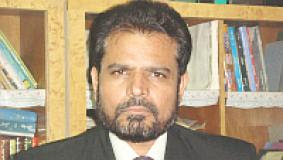Seven generations of Kayasth family’s contribution to literature is meticulously documented in a book
The contributions of the Kayasths in promoting the composite literary culture of Hyderabad has been meticulously documented by Narayan Raj, a distinguished scion of the clan, in his book Saga of a Kayasth Family . The book scheduled to be released on Tuesday makes a valuable addition to the literary history of the Asaf Jahi dynasty. In fact the history of the Nizams is incomplete without the history of the Kayasth family and vice versa.
Literate lot
Considered a literate scribe caste, the Kayasths — with their natural talent and outstanding capabilities — contributed immensely to the development of culture. Occupying important positions in different fields, some served as Diwans and some as administrators and advisors to rulers in the princely states. The post-Independence era saw Kayasths such as Rajendra Prasad rise to become the President and Lal Bahadur Shastri the Prime Minister. The Kayasths were among the distinguished families which accompanied Nizam-ul-Mulk, the founder of Asaf Jahi dynasty, when he came to the Deccan. Other families which came along were the Paigah nawabs, Nimbalkars, the Mathur family of Raja Shiv Raj Dharamwanth and the ancestors of Raja Rai Rayan.
The history of Kayasths dates back to early 18th century when Rai Daulat Rai accompanied Nizam-ul-Mulk to Hyderabad via Aurangabad. He occupied the high position of Musharif-e-Dewdi in the Nizam’s palace. One of his sons, Raja Ram, was in-charge of 36 departments in the Nizam government.
The book explains how Rai Daulat Rai's staunch Hindu family enjoyed the trust and confidence of the Muslim rulers. The fact that five generations of the family looked after the household affairs of the Nizams besides handling other important responsibilities shows the confidence reposed by the rulers in this family. This also speaks a lot about the communal harmony that prevailed in the erstwhile Hyderabad state. “The rulers and nobility those days never took religion to the streets as is being done by present day politicians for their selfish benefit,” says Raj Narayan who has thrown light on the hitherto neglected areas of Asaf Jahi dynasty in his book.
Being multi-linguists, the Kayasths wrote extensively. Raja Ram composed Chitragupt Mahatm in Braj Bhasha. His son, Rai Swami Pershad, penned Bhagawat Puran, a religious text in Persian, Sanskrit and Braj Bhasha. Bansi Raja’s son, Raja Narsing Raj, came up with five books and wrote ghazals, rubaiyats and qataas. Their responsible positions in the Nizam government did not stop them from pursuing their literary passion. The Kayasths wrote poetry, took part in mushairas and contributed to the rich cultural heritage of Hyderabad. They were all men of merit. Raja Girdhari Pershad alias Bansi Raja wrote with distinction and ranks among the great Persian poets.
Saga of a Kayasth Family is a treasure trove of literary delights. Like Alex Haley’s Roots , it traces the genealogy of the Kayasths covering a period of nearly 250 years.
J.S.Ifthekhar,
Hyderabad based journalist.
Article published in The Hindu
Dated July 31,2018

















